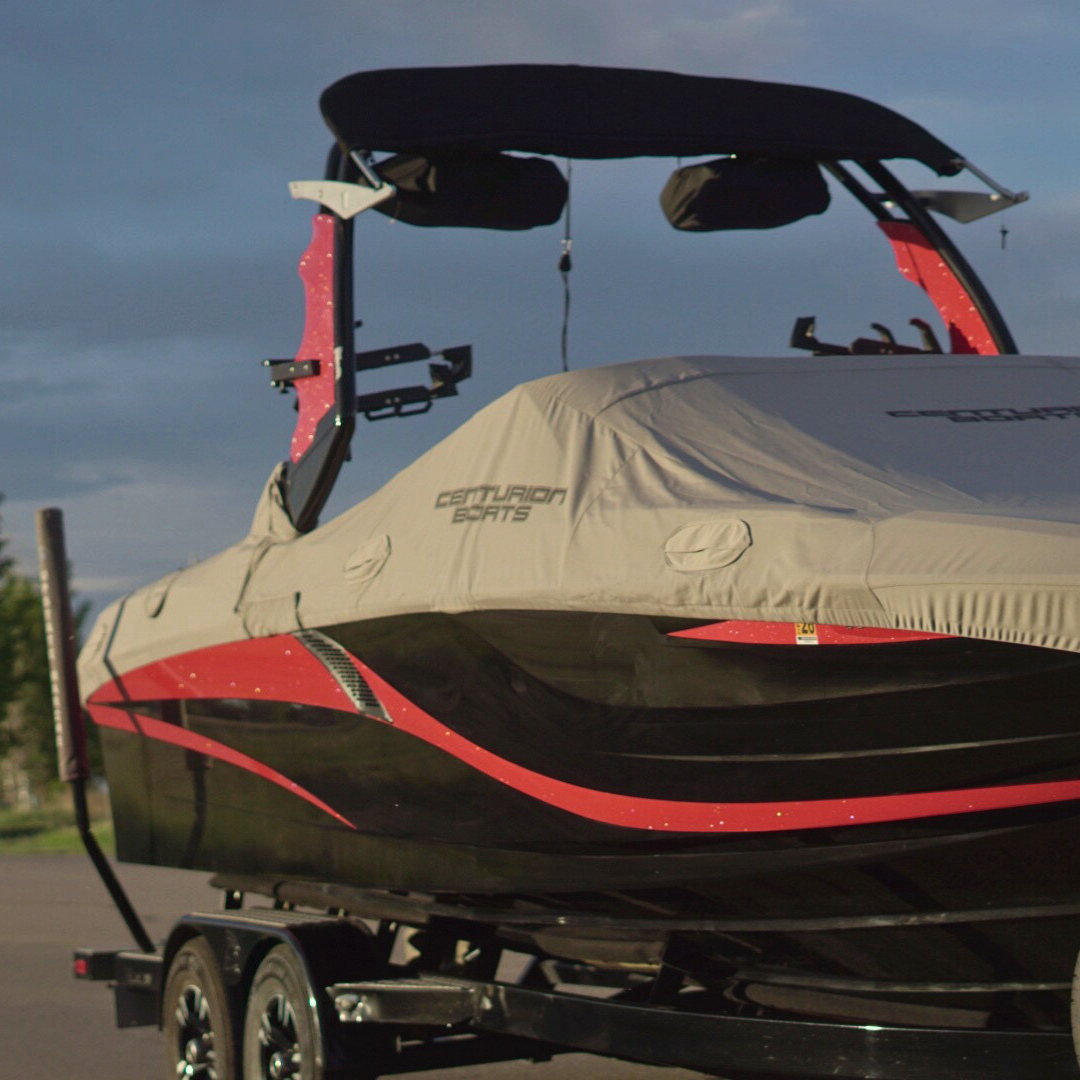
Can You Wakesurf Behind Any Boat?
Share
We get asked a lot around here whether you can wakesurf behind any old boat. And while at first glance it may look like you can, the simple answer is no. Between the engineering put into each boat and the safety of the different engine types, some boats are better than others at creating a surfable wave while others are downright unsafe.
The Physics: What Makes a Surfable Wave?
When a boat moves through water, it pushes water aside, creating waves behind it—the wake. For wakesurfing, the ideal wake must be large and powerful enough to support a rider without a tow rope. A surfable wave is typically generated at a relatively slow boat speed of around 10–12 mph, allowing the boat to sit deeper in the water and displace more water, creating a taller and more defined wave face. Additionally, deeper water (typically 12 feet or more) is crucial because shallow depths interfere with the wake formation, reducing the wave's size and effectiveness for surfing.
Engineering the Ideal Wakesurf Boat
Not every boat produces a surfable wave, largely because the ideal wake requires specific engineering considerations. A wakesurf-specific boat usually features a deep-V hull designed to ride low in the water. This hull shape displaces a significant amount of water, creating a larger, steeper wave that's perfect for surfing. In contrast, boats intended for waterskiing often have flatter hulls, which generate minimal wakes, ideal for skiing but inadequate for surfing.
Engine placement is another essential engineering factor. Boats with inboard engines are ideal for wakesurfing because the propellers are safely positioned beneath the hull, away from surfers. This configuration not only provides safety but also contributes to cleaner and more predictable waves. Boats with outboard or standard sterndrive engines, however, have exposed propellers behind the boat, making wakesurfing dangerous due to the risk of severe injury.
Ballast systems also significantly influence wake formation. Modern wakesurf boats typically incorporate ballast tanks that add extra weight, helping the boat sink deeper and creating a larger wake. The way ballast weight is distributed affects the wave's steepness, with more weight towards the stern producing steeper waves preferred by wakesurfers. Wake-shaping devices, such as adjustable surf tabs, further refine the wave, allowing riders to customize its steepness and shape to match their skill level and preference.
Why Not All Boats Are Suitable
Safety is a critical reason not all boats are suitable for wakesurfing. Surfing behind boats with outboard or standard sterndrive engines is particularly hazardous due to the proximity and exposure of spinning propellers. Furthermore, boats not engineered to handle the weight and slow speeds required for wakesurfing could become unstable, increasing risks such as swamping or loss of control.
Comparing Wakesurf Boats vs. Other Watersport Boats
Wakesurf boats differ significantly from boats used for other watersports. For instance, wakeboard boats share similarities with wakesurf boats but typically operate at higher speeds (18–24 mph) and produce smaller, symmetrical wakes designed for jumps. On the other hand, waterski boats are engineered to generate minimal wakes at high speeds (30–36 mph), making them unsuitable for wakesurfing. Each type of boat is tailored to the specific needs and ideal conditions of its respective sport, which is why wakesurfing requires a boat explicitly designed for it.
The Bottom Line
While wakesurfing is incredibly fun, it requires specific equipment and careful attention to safety. Not every boat is capable or safe for wakesurfing. Choosing a boat specifically engineered for wakesurfing ensures optimal performance, safety, and enjoyment. With the right boat and knowledge, your wakesurfing experience will be thrilling and safe.
